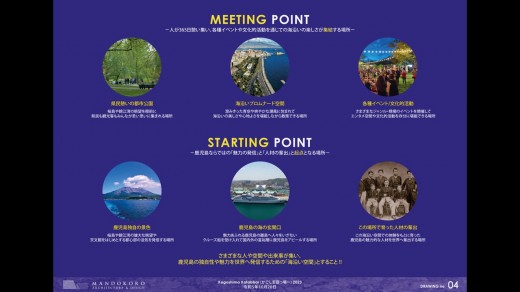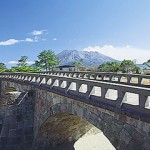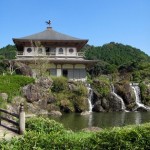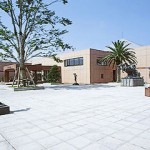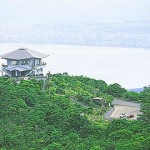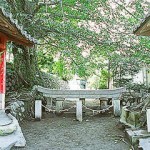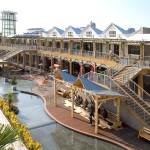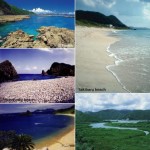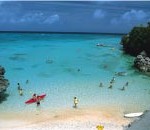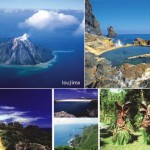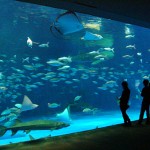Following on from the first report on the “Kagoshima Katabbar 2023″, we now report on Vol. 2.
Mr. Keng Mandokoro ~ The Coastal Story We Can Learn from Italy ~
What He Felt Through His Life in Italy
Bayside Stories We Can Learn from Italy
How about Bayside of Kagoshima?
Kagoshima’s Bayside Issues Reference cases for solving issues
Group Discussion Assignment from Mr.Mandokoro to Participants
Exchange Party
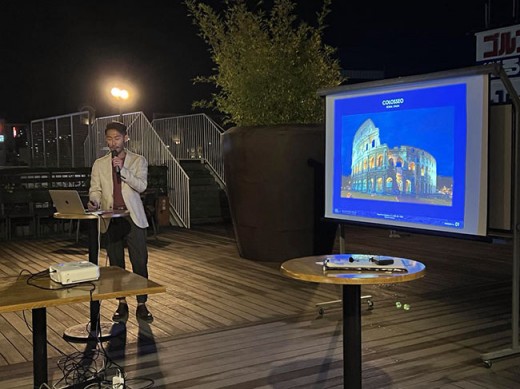
The second speaker is architect Kengo Masadokoro. Through his 18 years of experience in the world-class international city of Tokyo and the cultural heritage city of Rome, his life’s work has been an exploration of architecture and urbanism unique to Kagoshima.
While living in Italy and enjoying vacations to various beautiful cities, Mr. Mandokoro started to believe that each distinctive townscape closely reflects its historical and geographical context context and that the people living there take great pride in their town. He decided that he wanted to pursue development and architecture unique to Kagoshima, and returned to Kagoshima in September of last year.
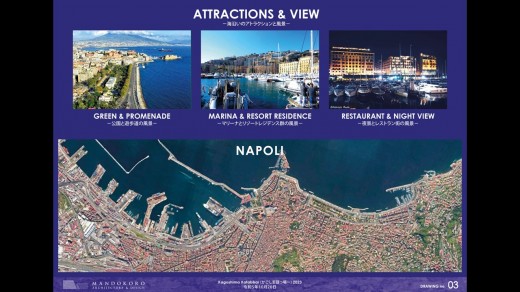
Based on his experience in urban planning and other activities in Italy, the talk focused on the seaside area of Kagoshima City.
Volcanoes, sea, and cityscapes. Kagoshima and Naples are very similar in landscape, geographical formation of bays, cities and hills, and scale.
But there are some major differences between the two cities. In Naples, each section has its theme, such as “port and ships,” “hotel district and ruins,” “park and promenade,” and “night view and restaurant district,” making the seaside area full of attractions and different landscapes.
In addition, there is a series of roads that allow visitors to walk freely throughout the entire bay area without crossing almost any intersections. In other words, each area of the seaside can be experienced as a connected seaside story thanks to the well-developed roads.
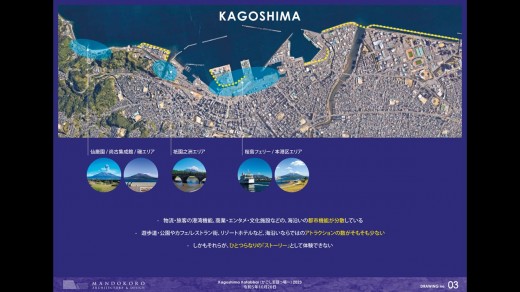
Kagoshima has almost the same geographical features and scale as Naples. Along the coast of Kagoshima are “Senganen and Iso Area,” “Gionosu Area,” “Sakurajima Ferry,” and “Honkou-ku Area. Unfortunately, the areas along the seaside are not connected.
The difference from Kagoshima is obvious when you look at the expanse of Naples’ seaside attractions in terms of area and linear connections.
This shows the following issues of Kagoshima.
✔ The port functions of transportation and passenger services are not well organized with respect to urban facilities such as commercial, entertainment, and cultural facilities.
✔ There are few attractions along the seaside, such as promenades, parks, cafes, restaurants, and resort hotels.
✔ Isolated attractions cannot be experienced as a connected story.
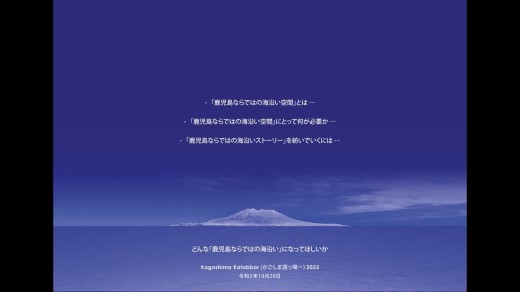
You will not realize many things unless you see, walk, and experience them.
Mr. Mandokoro’s talk reminded me of something a foreigner living in Kagoshima said.
“Kagoshima City is located by the sea, but it is such a waste that its advantages are not utilized. When you drive down the road, you don’t realize that the ocean is right beside it. It is a waste of natural and tourist resources if we don’t make the most of such a wonderful thing.”
Although the seafront in Naples and the seafront in Kagoshima are similar in terms of geography and distance, there is no need to say which is more enjoyable for residents and visitors in terms of feeling connected to the sea and eojoying the scenery, the wind, and the sparkling surface of the sea.
Mr. Mandokoro asks the following questions.
- What is the unique seaside space of Kagoshima?
- What kind of things are necessary for Kagoshima’s unique seaside space?
- What kind of infrastructure is needed to weave a unique Kagoshima seaside story?
- By extension, what kind of unique seaside do you want Kagoshima to be?
When you are asked these questions, what kind of Kagoshima bayside do you see?
In considering the answer to the above questions, Mr. Masadokoro cited his past involvement in Kagoshima’s urban development and other projects as a reference.
He first listed two concepts for the seaside story.
・Meeting Point
・Starting Point
A “Meeting Point” is a place where people can rest and gather at any time. It is a space where people can walk freely while feeling the sea breeze that only the seaside area can offer, and a space where various events and cultural activities can be freely held.
The “Starting Point” is a space where Kagoshima’s unique landscape is presented. As a gateway to the sea, it is a place that connects to remote islands, welcomes cruise ships and produces human resources who have grown up in this area.
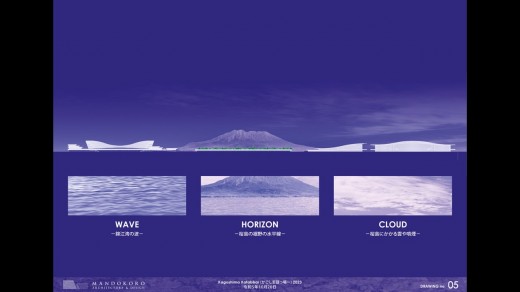
We would like to think together about making it a seaside space where people and events can gather and communicate the attractiveness of Kagoshima.
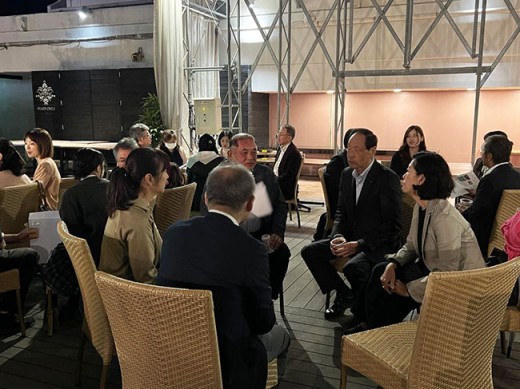
- What do you think is necessary for a unique seaside story of Kagoshima?
- What do you want Kagoshima’s unique seaside story to be like?
Again, as before, each group quickly formed a circle and began the discussion.
For those of us who were born and have lived in Kagoshima, many of us realized during the discussion that the once beautiful coast along Kinko Bay has been landfilled, factories have been built, and it has become commonplace to live without being aware that the ocean is right there.
Some said that perhaps “knowing” is the first step and that for Kagoshima to change, more people need to be aware of the current state of Kagoshima and educated to change it to a more beautiful and livable Kagoshima.
Without knowledge and awareness, it is difficult to come up with ideas that will make a difference. That is why I cannot help but hope that more people will have such opportunities.
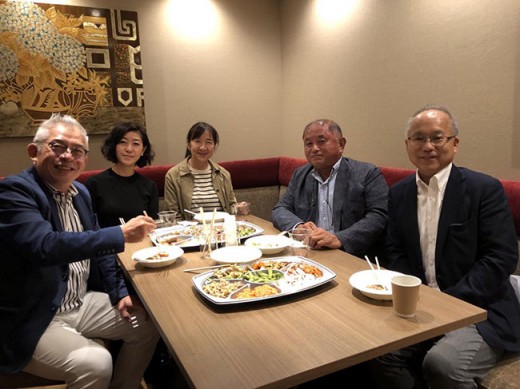
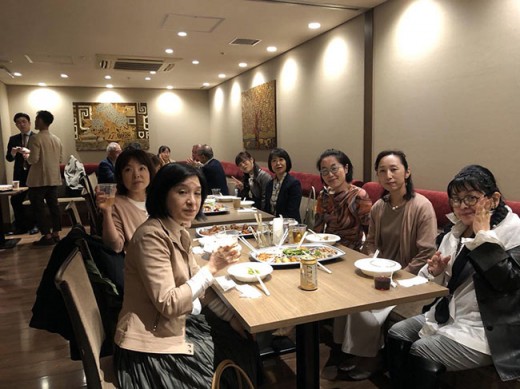
The second part of the event was a social gathering. This year again, many delicious dishes from Gardens Terrace on the rooftop floor of Maruya Gardens were served.
Attendees also enjoyed as much of the popular annual wine, beer, and soft drinks as they wanted. These were brought in by the council’s advisors and directors. There were a variety of people, some relaxing in the warm room, others enjoying pleasant conversation outdoors in the breezy air.
At the end, a commemorative photo was taken with everyone.
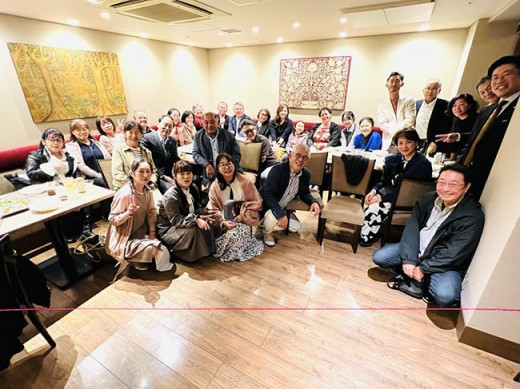
We hope to see you again next year.
And if you were not able to make it this time but would like to participate, please come next time.
Related Article: 【Event Report】 Think about Kagoshima’s Prosperous Future
「KAGOSHIMA KATABBAR 2023」Vol.1
~ Doing “Keiyir” in Kagoshima ~
Category : text @en
Tag : 24 divisions of the solar year , 24sekki , corona virus , COVID-19 , COVID19 , Emergency , Japanese culture , season , tanabata , The coronavirus , 日本の文化
